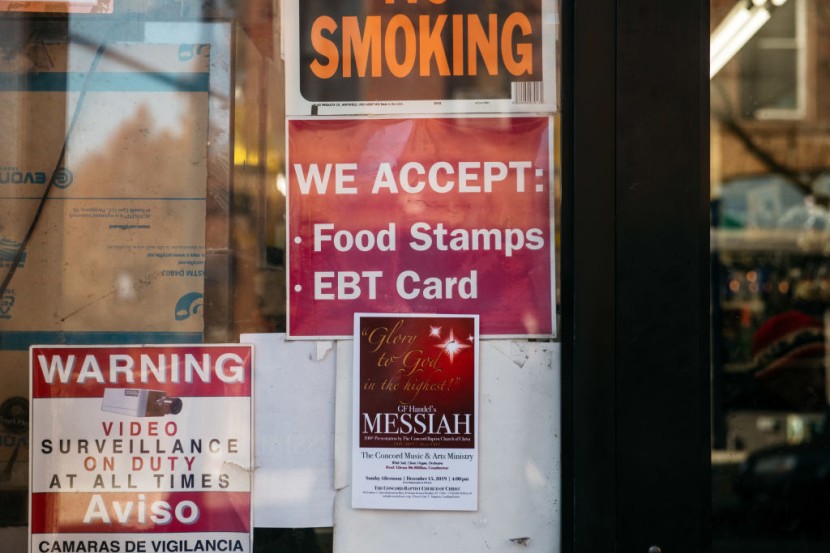
Food banks across the country are reporting huge queues at their distribution facilities. According to the Census Household Pulse Survey statistics, rates of reported hunger have been rising since early August, when 7.8% of those asked indicated they "often" or "often" did not have enough to eat.
In early February, 10.2% of those asked stated their family doesn't always have enough food. The increase is even greater among families with children, climbing to 13.1%, though still well below pandemic levels, as per The Washington Post via MSN.
Americans Still Seek Financial Aid
According to census data, once Child Tax Credit payments halted in late January and early February, 35% of individuals living in homes with children stated they struggled to fund basic expenses.
Although many Americans' economies have improved, and stimulus and child tax credits aided many families last year, Kyle Waide, president of the Atlanta Community Food Bank, noted that many people are still digging out from the financial effects of extended furloughs or lower household incomes.
Inflation data from March shows significant price rises in gasoline, housing, and food. The gasoline index increased by 6.6 percent in February, accounting for over a third of the monthly increase. Since April 2020, the food index has seen the greatest monthly increases.
How Much SNAP Benefits Each State Provides
Furthermore, government programs intended to assist food banks have expired, while food prices have risen, resulting in the Capital Area's food budget being seven times pre-pandemic.
According to the United States Department of Agriculture, the Supplemental Nutrition Assistance Program (SNAP) assists more than 41 million people (about one out of every eight Americans) in achieving food security. Despite being a federal program, SNAP benefits are managed by the states, resulting in disparities in benefits across the country, as per Go Banking Rates.
According to the US Department of Health and Human Services, except for Alaska and Hawaii, all states have the same eligibility standards and benefit amounts. According to the Census Bureau, the method for calculating benefits varies greatly from one state to the next.
According to the most recent data from the Center on Budget and Policy Priorities, the following is an alphabetical list of each state's SNAP participation:
- Alabama - Average/ month $129
- Alaska - Average/ month $181
- Arizona - Average/ month $130
- Arkansas - Average/ month $108
- California - Average/ month $141
- Colorado - Average/ month $128
- Connecticut - Average/ month $143
- Delaware - Average/ month $124
- District of Columbia - Average/ month $142
- Florida - Average/ month $127
- Georgia - Average/ month $132
- Hawaii - Average/ month $258
- Idaho - Average/ month $118
- Illinois - Average/ month $135
- Indiana - Average/ month $129
- Iowa - Average/ month $119
- Kansas - Average/ month $119
- Kentucky - Average/ month $123
- Louisiana - Average/ month $135
- Maine - Average/ month $117
- Maryland - Average/ month $128
- Massachusetts - Average/ month $134
- Michigan - Average/ month $120
- Minnesota - Average/ month $111
- Mississippi - Average/ month $120
- Missouri - Average/ month $130
- Montana - Average/ month $123
- Nebraska - Average/ month $124
- Nevada - Average/ month $125
- New Hampshire - Average/ month $110
- New Jersey - Average/ month $122
- New Mexico - Average/ month $127
- New York - Average/ month $136
- North Carolina - Average/ month $126
- North Dakota - Average/ month $126
- Ohio - Average/ month $132
- Oklahoma - Average/ month $128
- Oregon - Average/ month $133
- Pennsylvania - Average/ month $129
- Rhode Island - Average/ month $144
- South Carolina - Average/ month $127
- South Dakota - Average/ month $136
- Tennessee - Average/ month $131
- Texas - Average/ month $125
- Utah - Average/ month $122
- Vermont - Average/ month $122
- Virginia - Average/ month $128
- Washington - Average/ month $119
- West Virginia - Average/ month $117
- Wisconsin - Average/ month $113
- Wyoming - Average/month $124
The maximum monthly allowance for a family of four in the 48 contiguous states and Washington, DC has been increased to $835. A family of four in Alaska can now get anything from $1,074 to $1,667 per month, depending on their rural/urban status.
In Hawaii, the COLA increased the monthly cap for a family of four to $1,573. In Washington DC, the minimum benefit was raised to $20. $26 to $40 in Alaska, $38 in Hawaii, and $26 to $40 in the Lower 48. Benefits for Guam and the US Virgin Islands were also increased.
Related Article : Stimulus Check New York: $1000 Available for New Yorkers [Eligibility, Requirements, How to Apply]
© 2025 HNGN, All rights reserved. Do not reproduce without permission.








